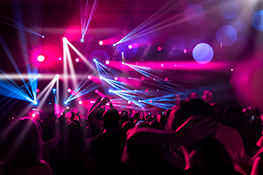Stage Lighting Secrets Only the Pros Know
Understanding the Language of Light: Color Temperature and its Impact
Beyond simply illuminating the stage, professional lighting design hinges on a nuanced understanding of color temperature. Measured in Kelvin (K), color temperature dictates the “warmth” or “coolness” of a light source. Lower Kelvin values (e.g., 2700K) represent warmer, more orange-hued light, often used for intimate scenes or creating a sense of nostalgia. Higher Kelvin values (e.g., 6500K) produce cooler, bluer light, suitable for scenes requiring a more clinical or futuristic feel. Mastering this allows for precise emotional manipulation through lighting alone. Professionals don’t just pick a color; they carefully choose a color temperature to evoke a specific feeling, subtly guiding the audience’s interpretation of the scene. This goes beyond simply choosing a “pretty” color; it’s about strategic emotional manipulation through the careful selection of color temperature.
Beyond the Spotlight: The Power of Gobos and Their Creative Applications
Gobos, or go-betweens, are metal templates placed in front of lighting instruments to project patterns onto the stage. While simple in concept, their application is incredibly diverse. Professionals understand that gobos are not just for simple shapes; they can be used to create incredibly detailed and dynamic visuals, from subtle textures to complex scenes. The placement and projection of gobos requires meticulous planning and technical skill, carefully considering the distance between the gobo and the projection surface to achieve the desired size and sharpness. Furthermore, professionals leverage gobo rotation and animation techniques to create stunning effects that add depth and visual interest, transforming a simple stage into a captivating landscape.
The Art of Layering Light: Achieving Depth and Dimension
One of the most crucial aspects of professional lighting design is layering. This involves strategically using multiple light sources with varying intensities, colors, and angles to create depth, texture, and dimension on stage. Instead of relying on a single, flat wash, professionals meticulously layer light, creating highlights, shadows, and gradients that add realism and visual interest. This technique subtly guides the audience’s eye, emphasizing key elements while subtly de-emphasizing others. Understanding how light interacts with different surfaces and fabrics is paramount to achieving a well-layered effect. This is a skill honed through years of experience and a keen eye for detail.
Harnessing the Power of Movement: Dynamic Lighting Design
Static lighting rarely conveys the dynamism of a performance. Professionals skillfully utilize moving lights to create dynamic effects, enhancing the emotional impact of the show. This requires expertise in programming lighting consoles and a deep understanding of timing and choreography. The precise movements of lights, carefully synchronized with the action on stage, draw the audience’s attention, emphasize specific moments, and build suspense. Mastering the art of dynamic lighting can elevate a performance from good to unforgettable.
The Unsung Hero: Safety and Maintenance in Stage Lighting
Beyond creativity, professional lighting technicians prioritize safety. Rigorous safety checks, proper cable management, and regular maintenance are essential for preventing accidents. Professionals understand the potential hazards associated with high-powered lighting equipment and adhere to strict safety protocols. This includes understanding the weight limits of rigging systems, using appropriate safety harnesses, and performing regular inspections of all equipment. Proactive maintenance, including cleaning and replacing components, extends the lifespan of equipment and ensures safe and reliable performance.
Conclusion: Elevating Performance Through Illuminative Expertise
Stage lighting is more than just illumination; it’s a powerful storytelling tool. By understanding the nuances of color temperature, gobo usage, light layering, dynamic movement, and safety protocols, lighting professionals transform performances, creating immersive and unforgettable experiences for the audience. These secrets are not easily acquired, but through dedicated study and hands-on experience, you can elevate your own lighting designs to new heights.


 Auditorium Construction Services
Auditorium Construction Services 